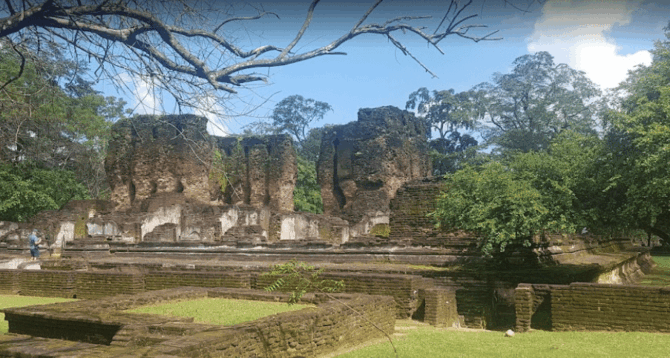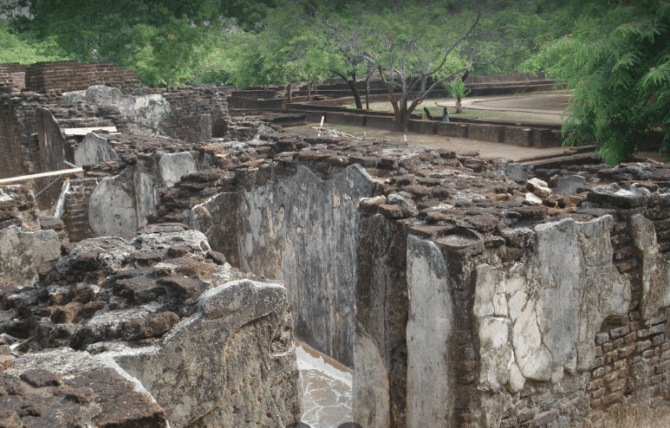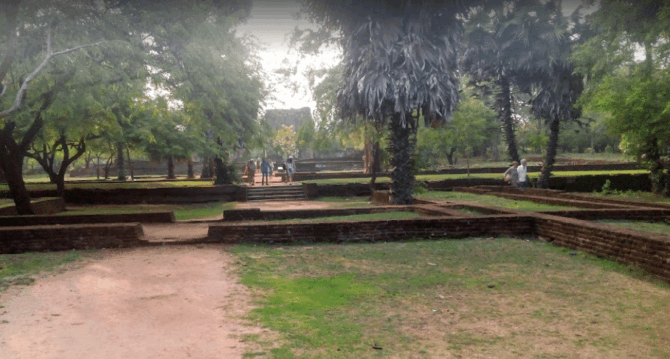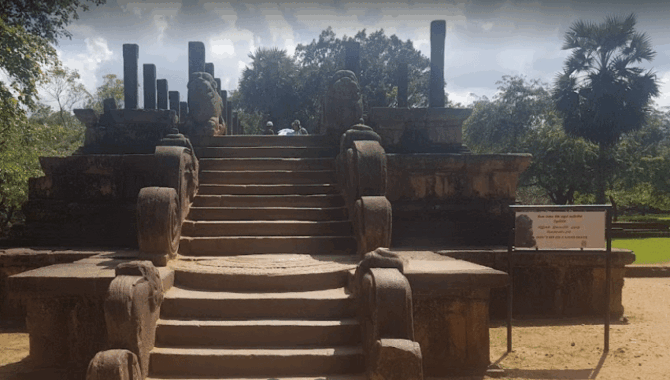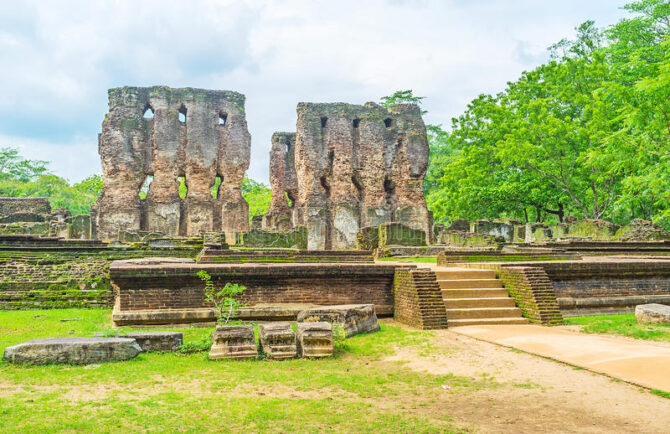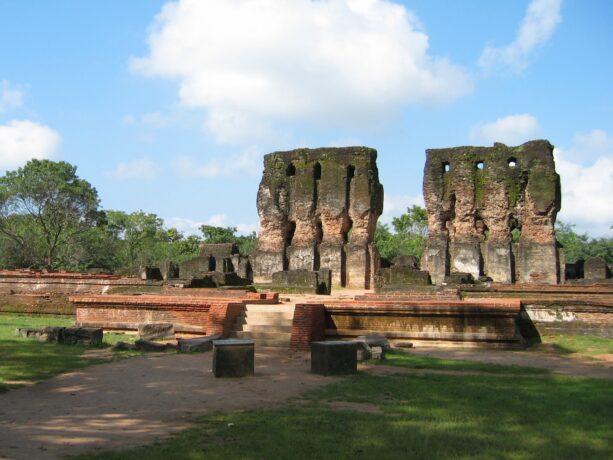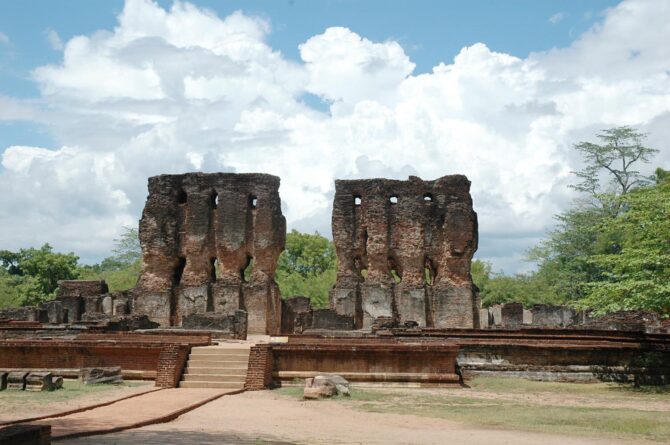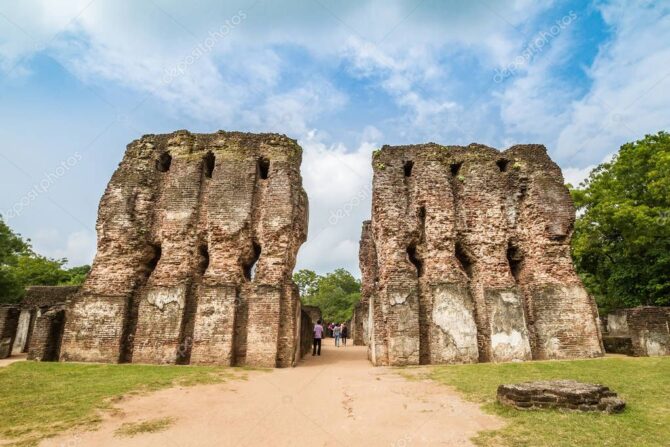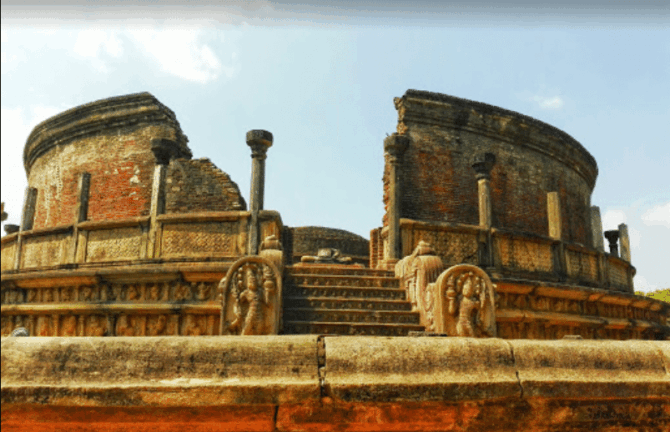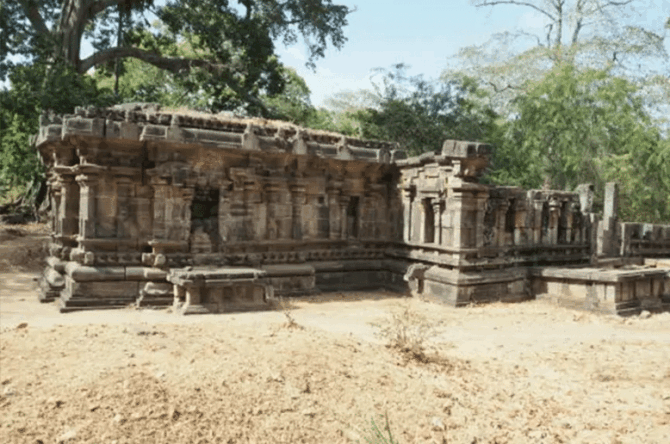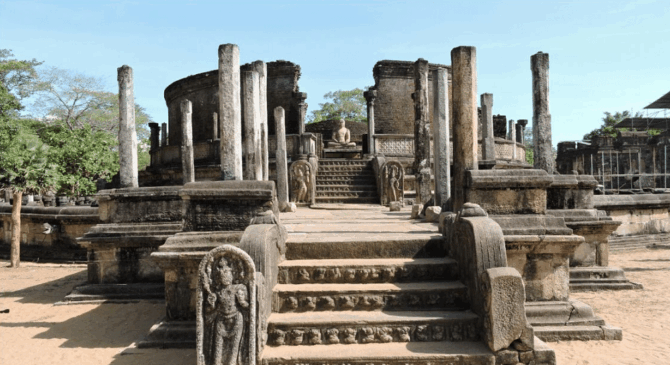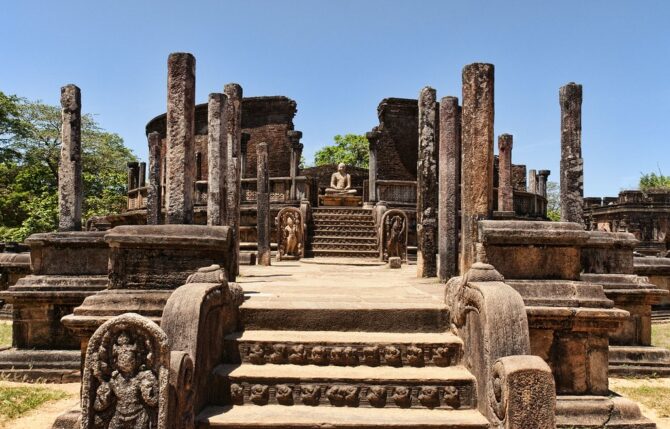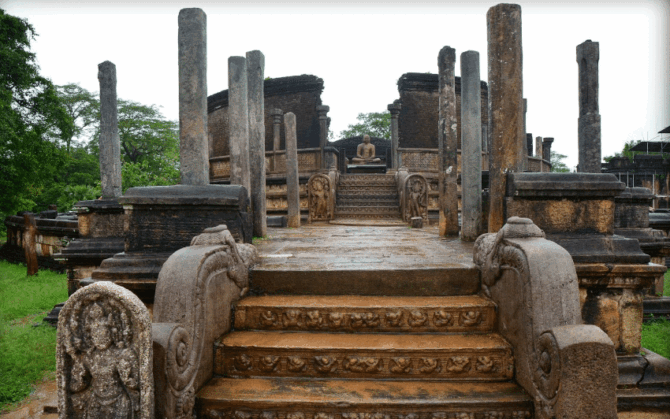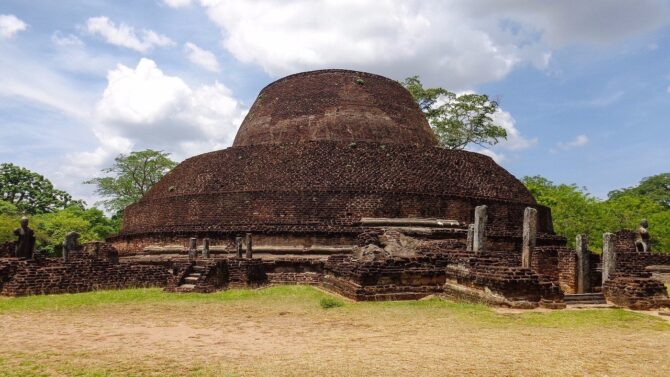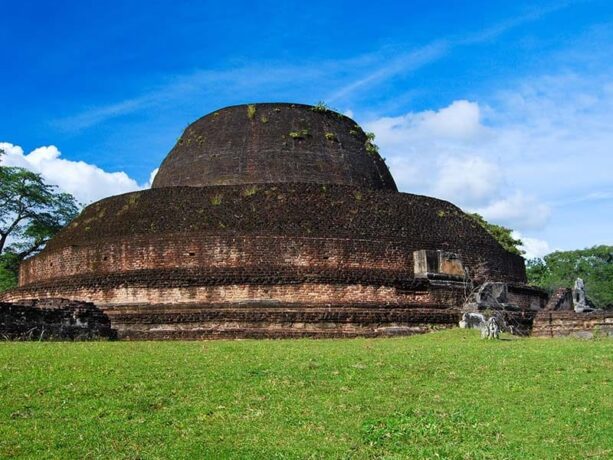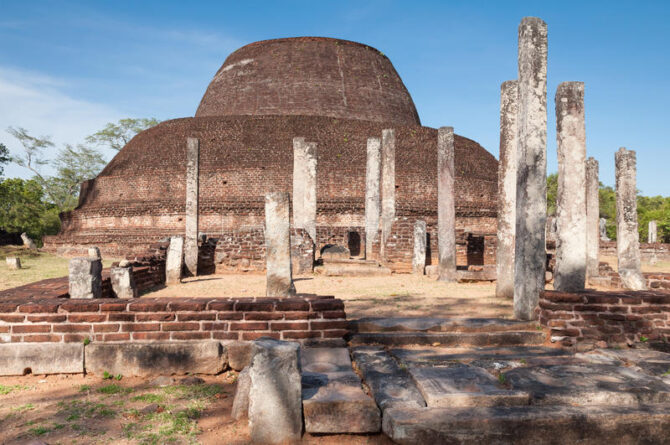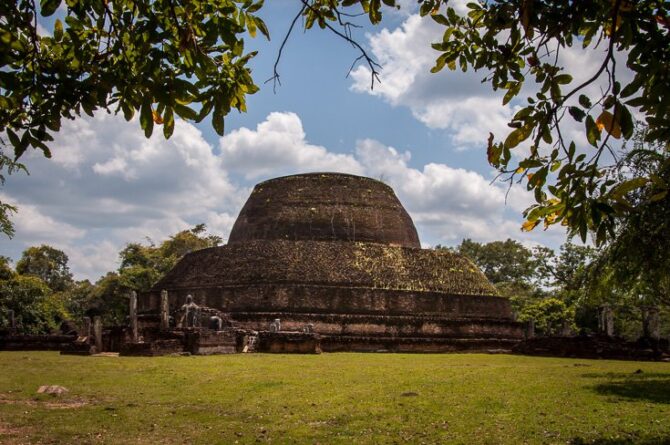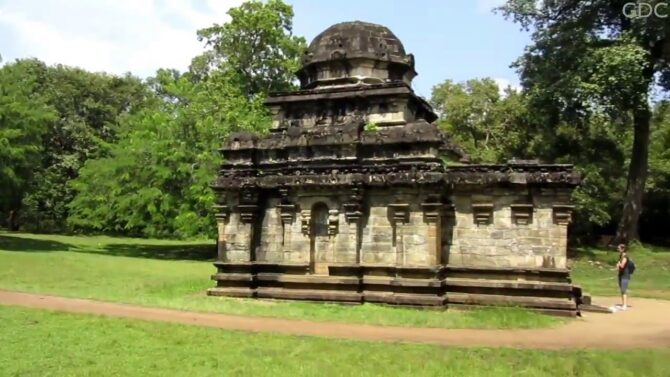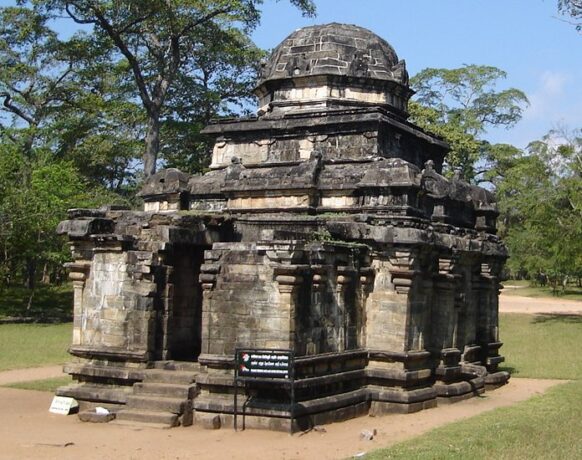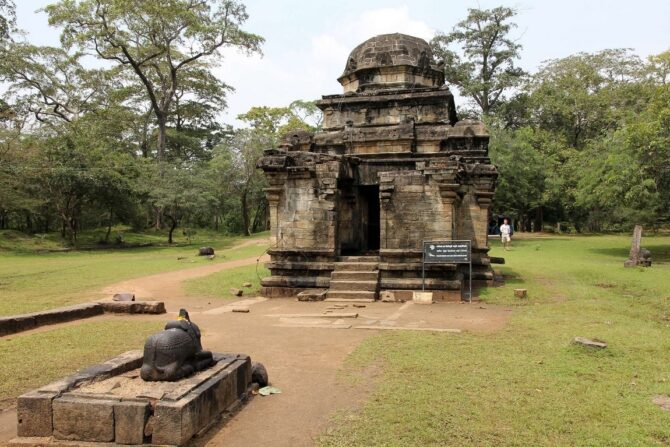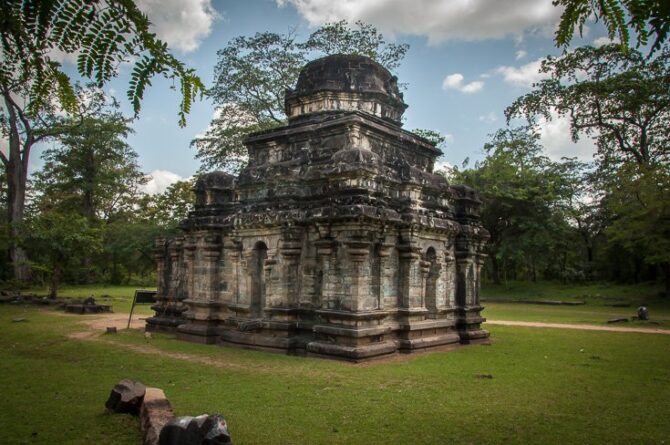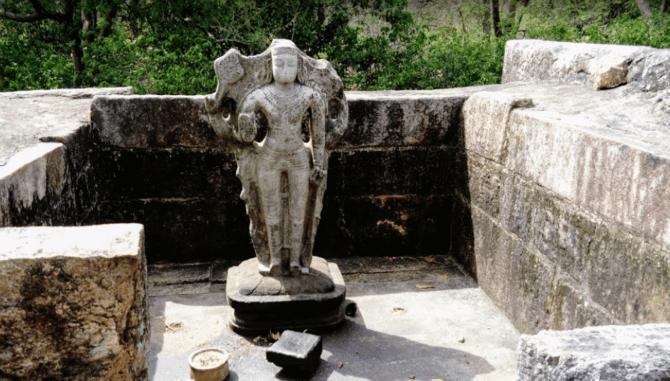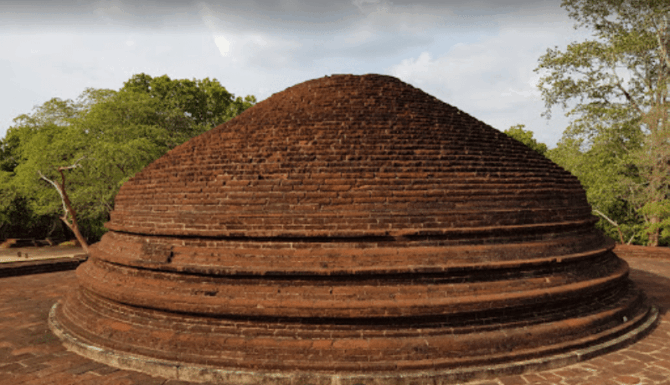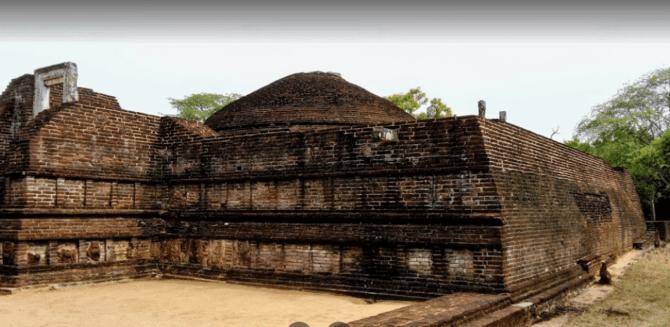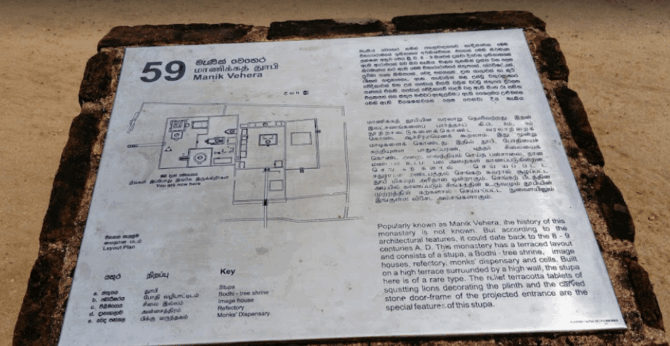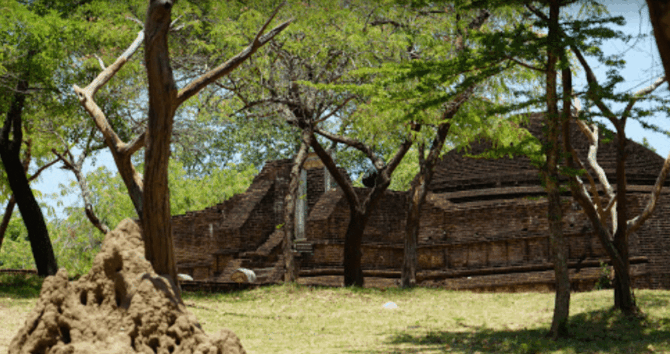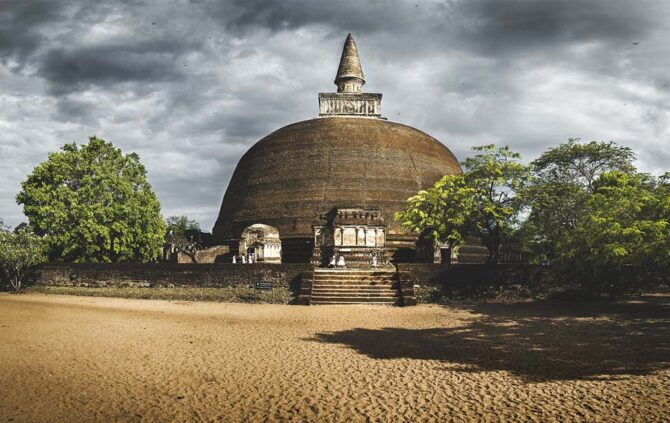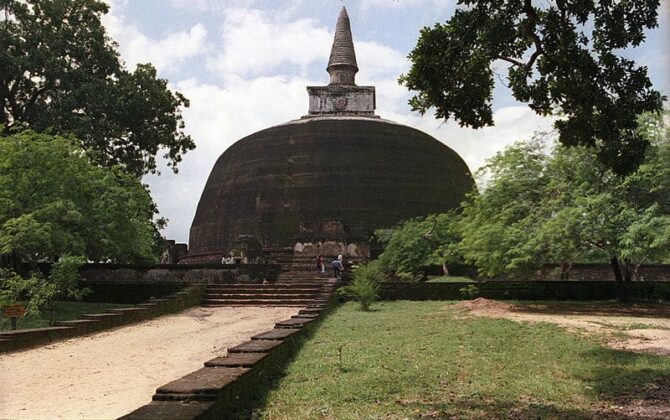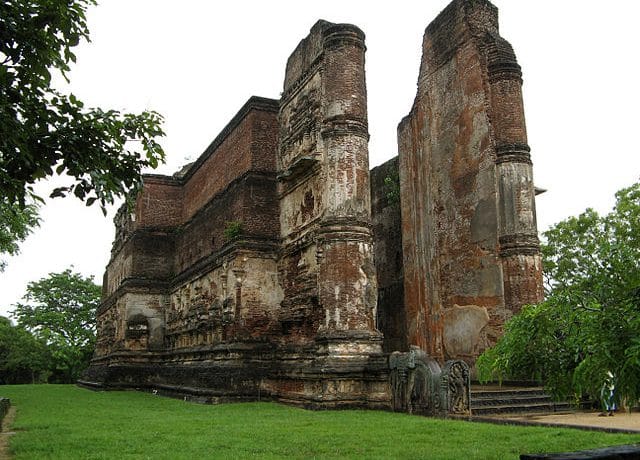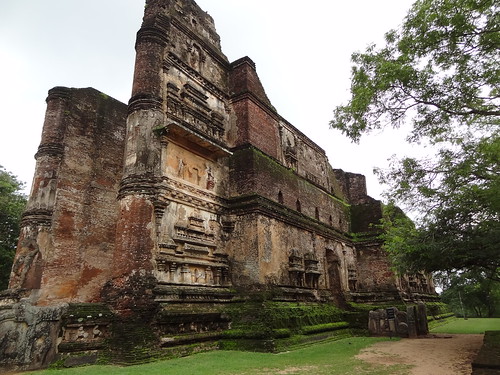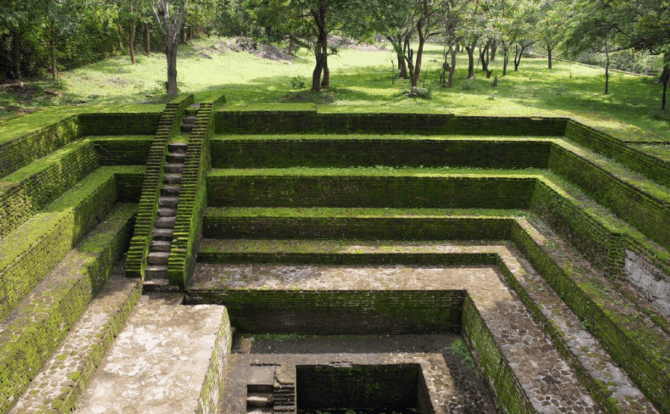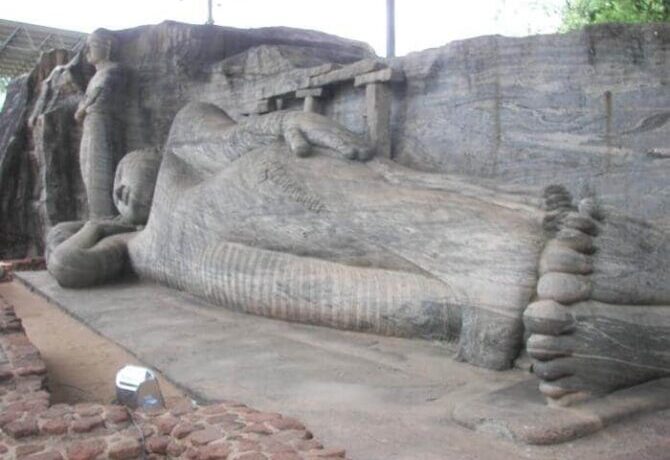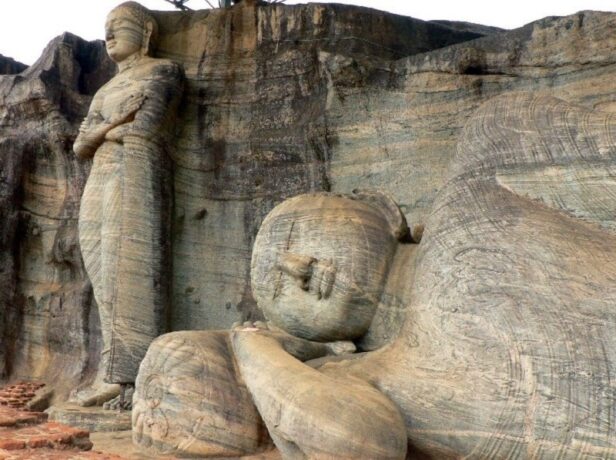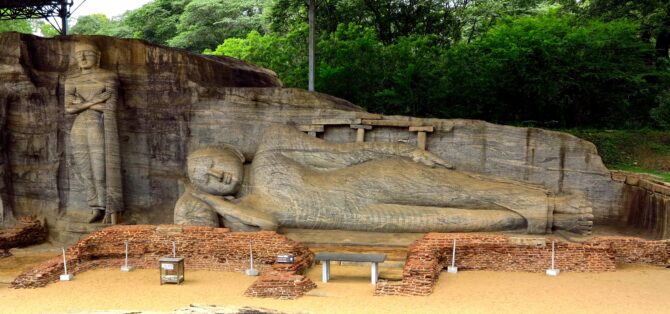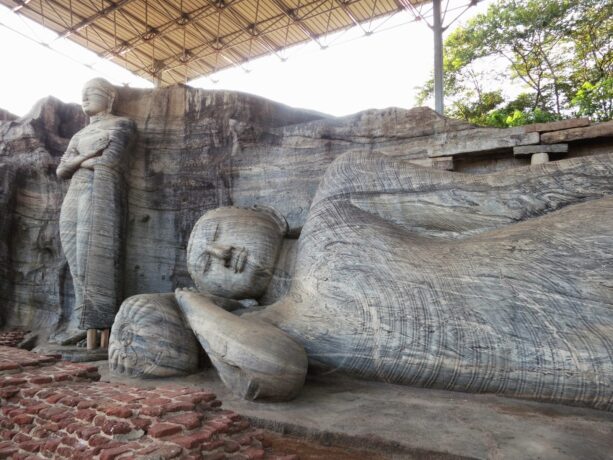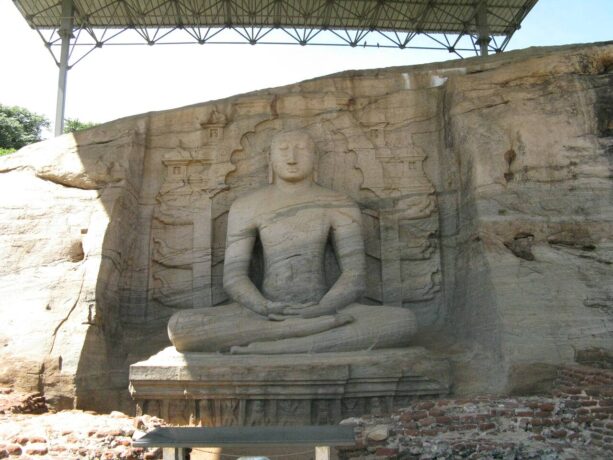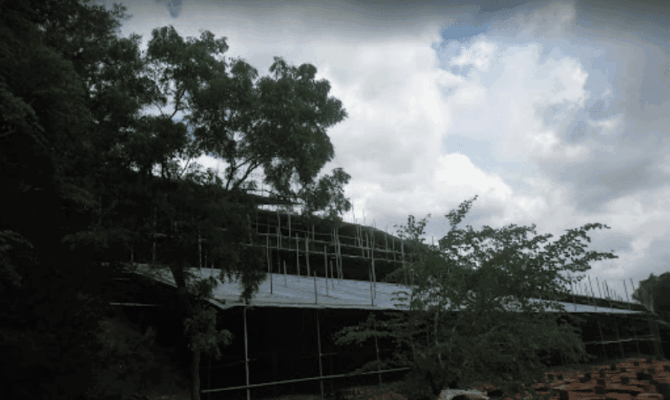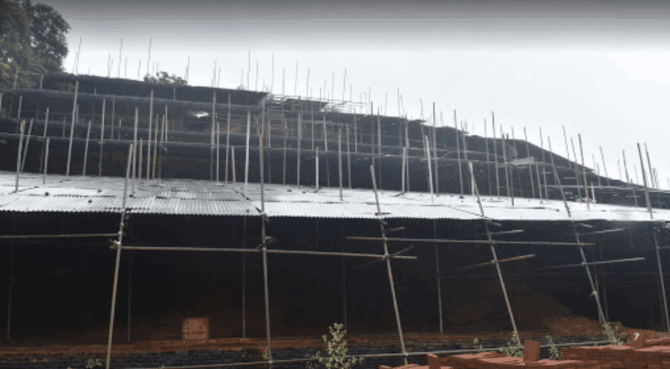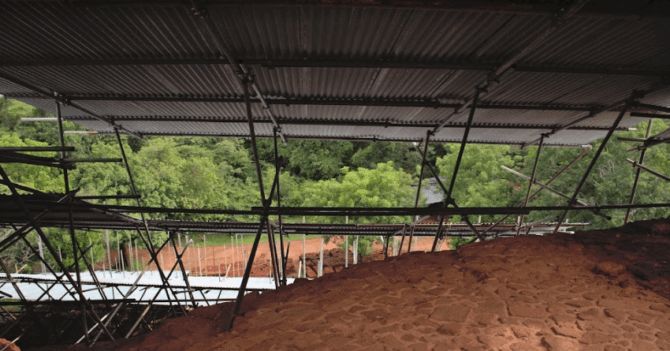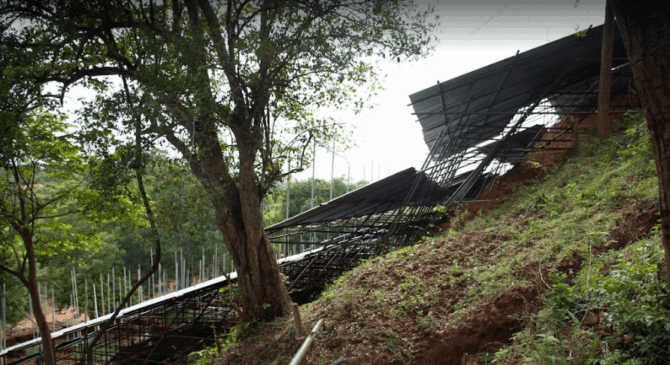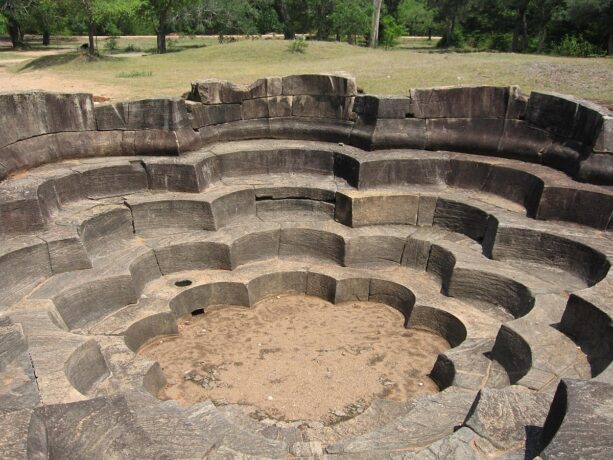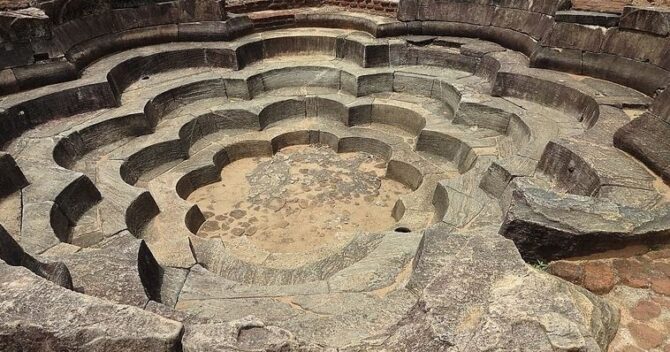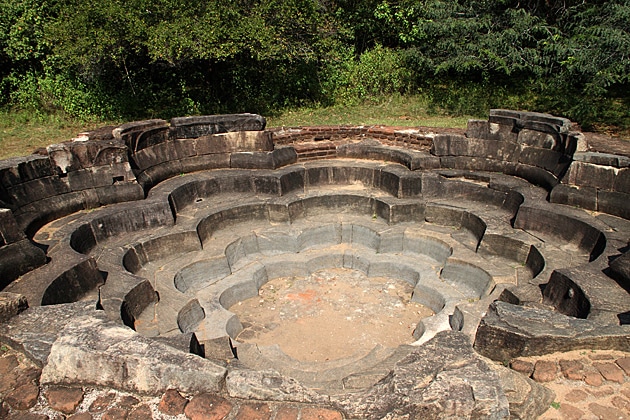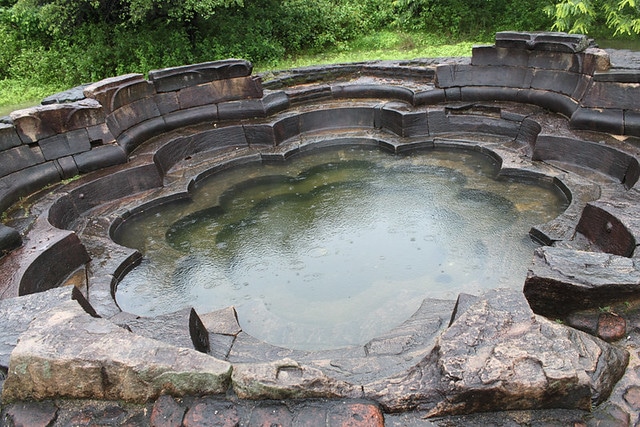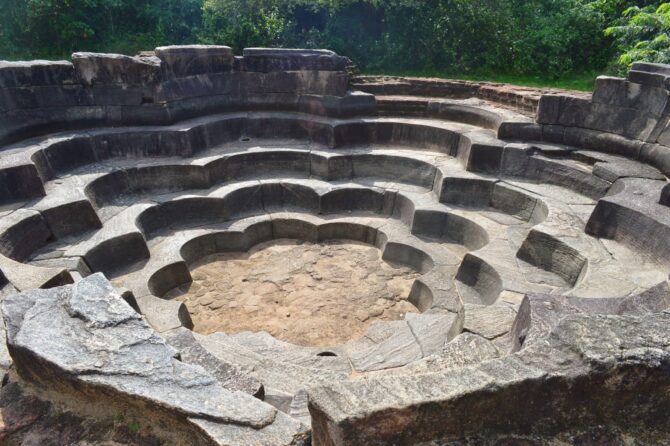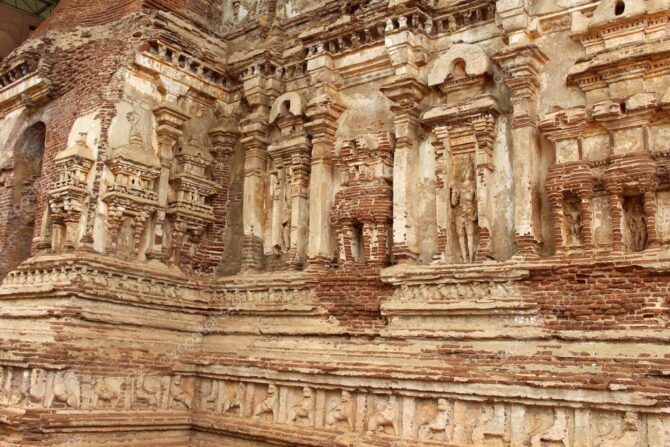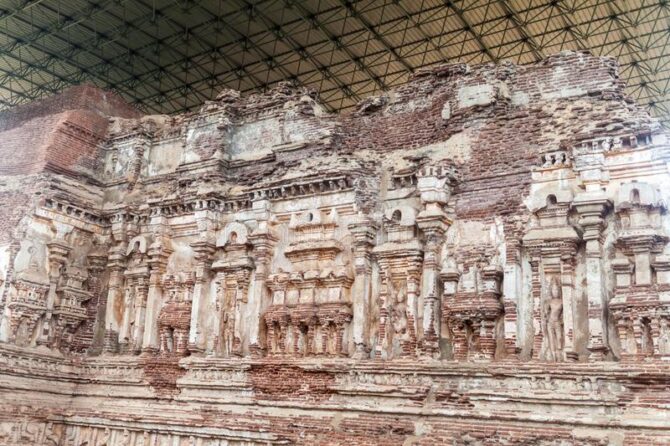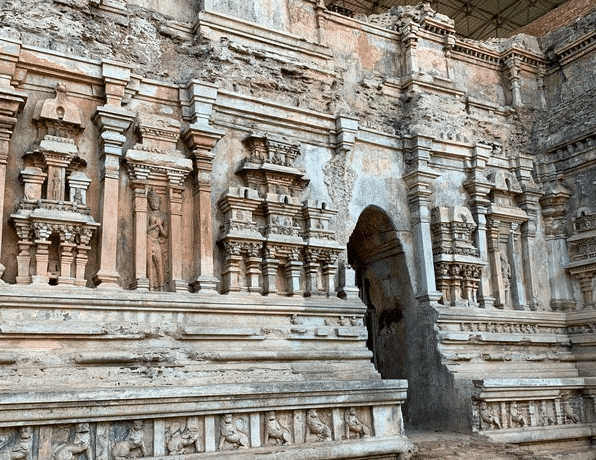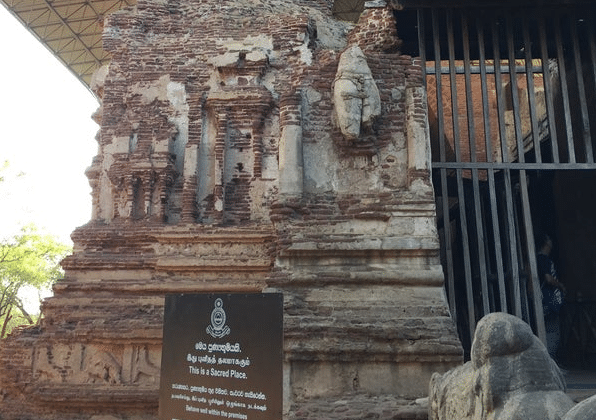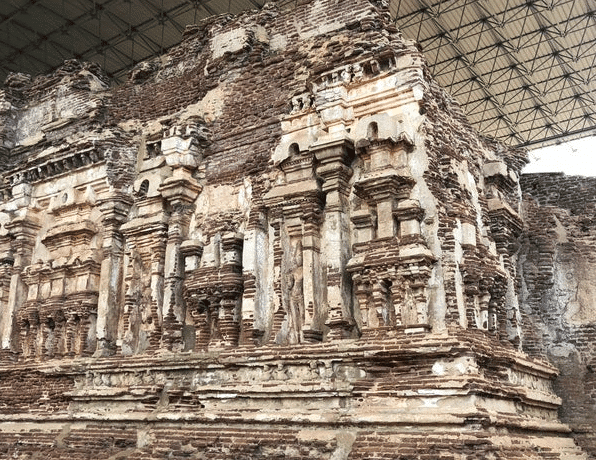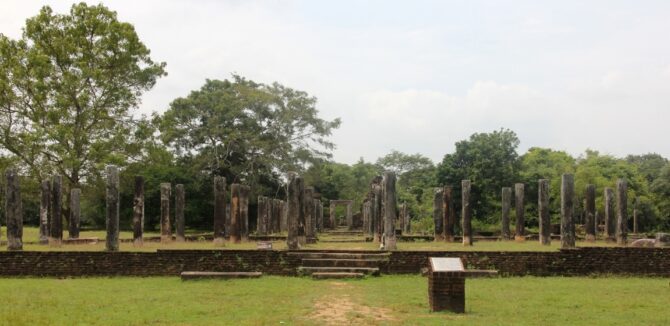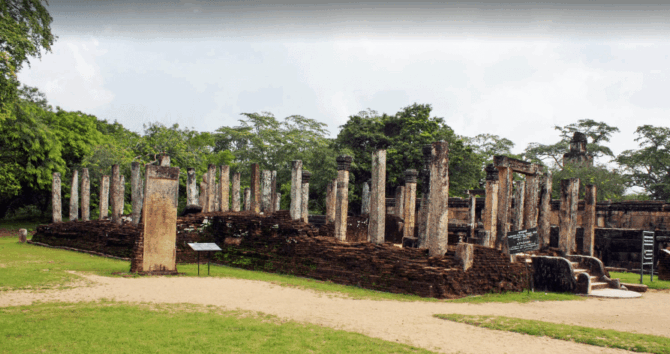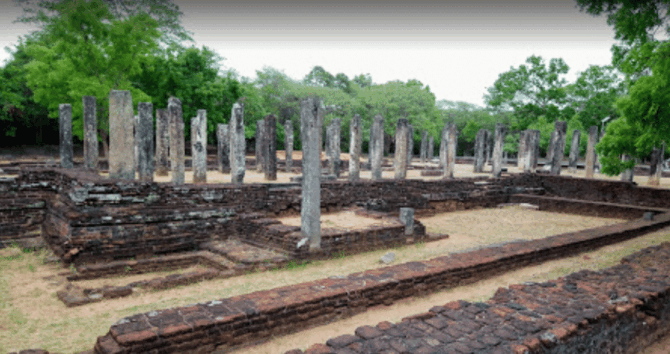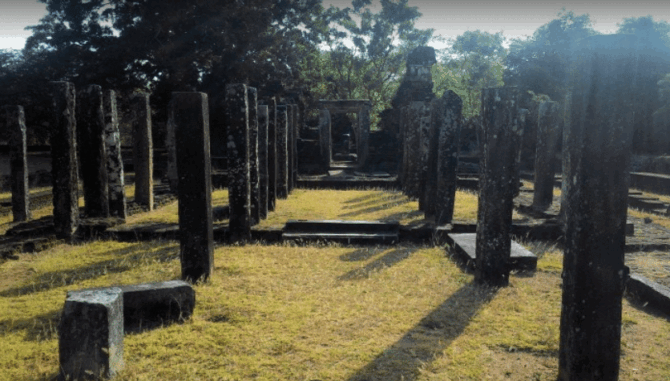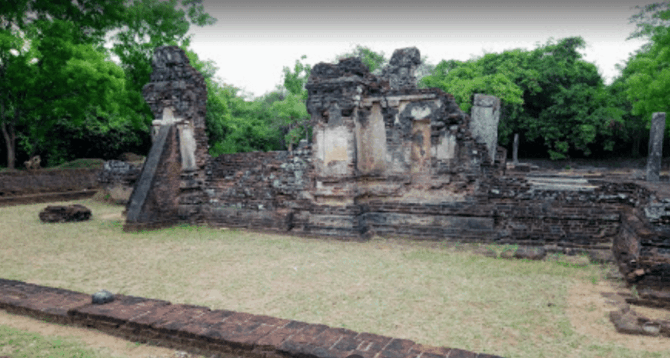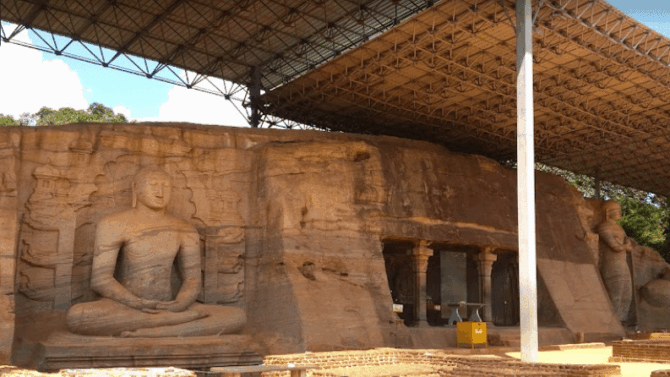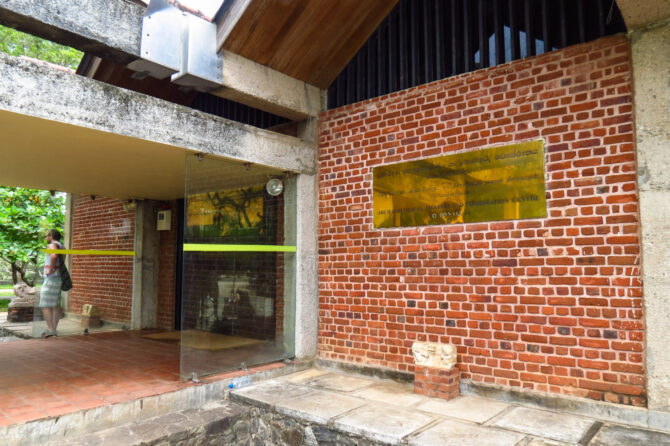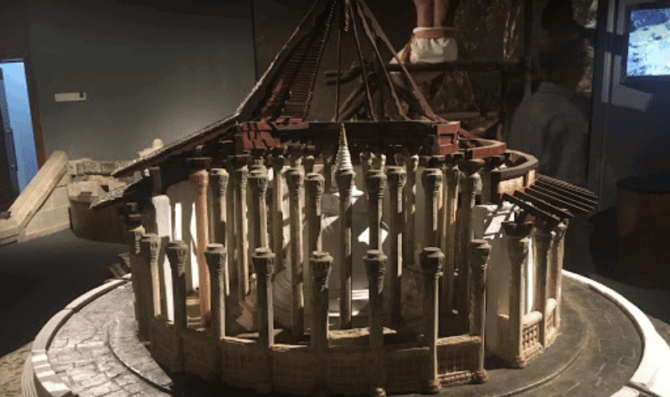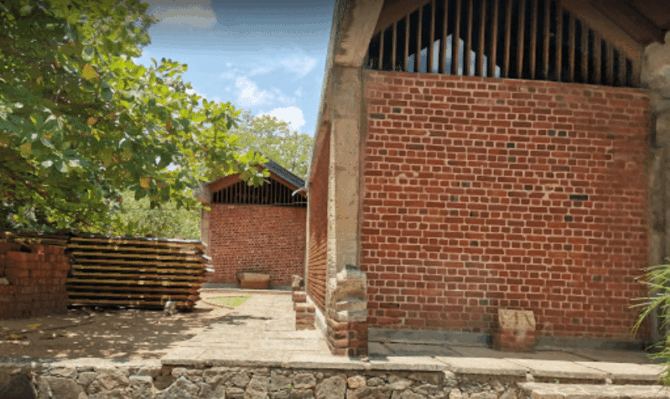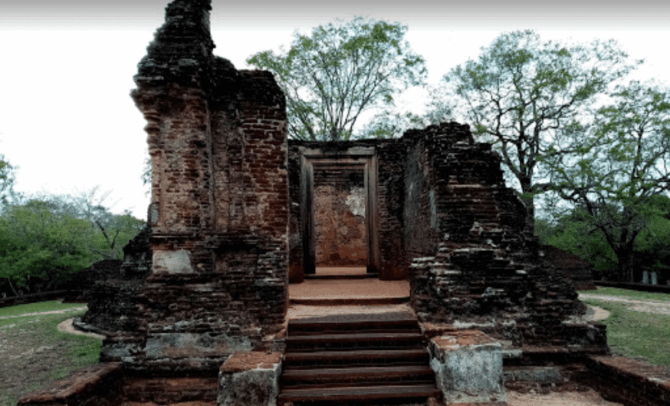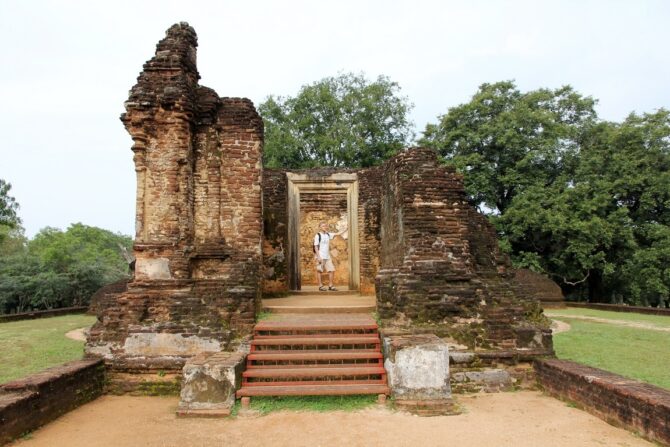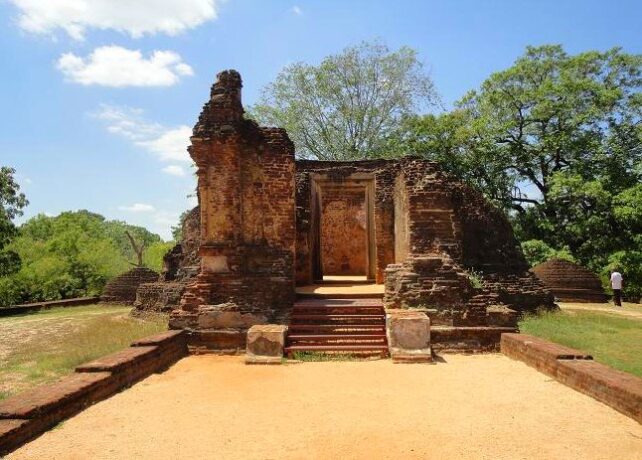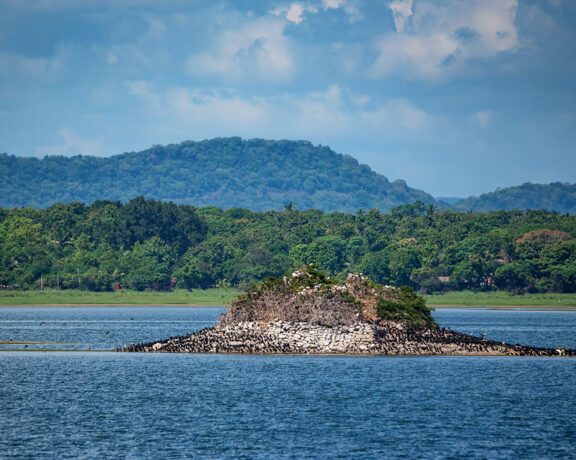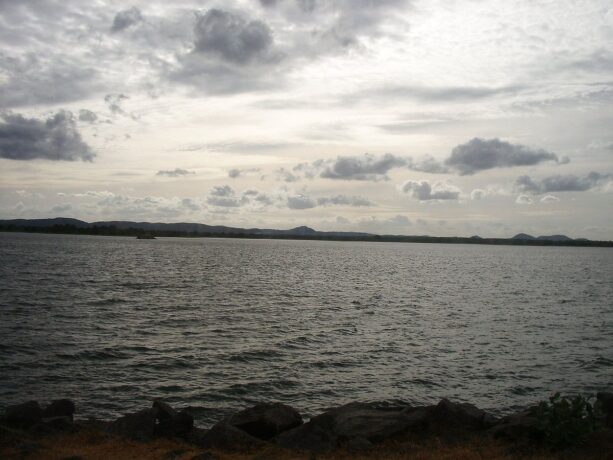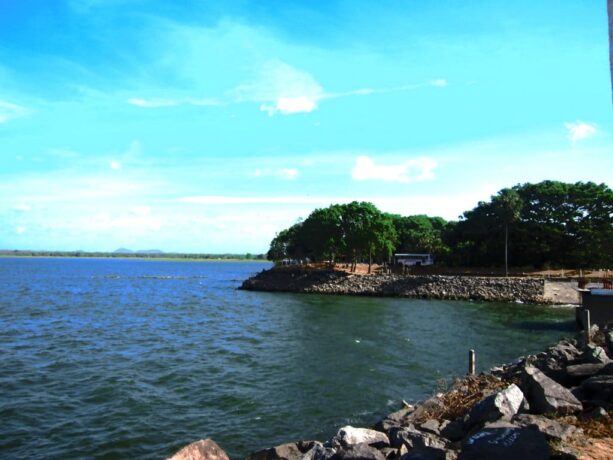The ancient city of Polonnaruwa in the Middle Ages was the capital of Sri Lanka. Today it is a popular tourist destination for exploring the traditional architecture and art of the island. It is located on the territory of the so-called “Golden Triangle”, which, in addition to the ruins of Polonnaruwa, includes the religious complexes of Anuradhapura and highly aesthetic objects of Kandy. All three former capitals of Sri Lanka are often combined into one excursion tour. Hotels offer it to foreign tourists as one of the first tours to get acquainted with the history of the island.
But you can visit Polonnaruwa on your own, having made a route to the sights in advance. This will help a brief overview of archaeological and natural monuments, proposed in the article. The main object of inspection will be the Archaeological Park, in which the sights of the former capital are concentrated. By the way, Polonnaruwa was the fiefdom of the rulers of Sri Lanka from the 10th to the 12th centuries AD. The city was built by Buddhist monks in the 3rd century BC. Since that time, an artificial reservoir and ancient temples have been preserved. The entire historical part is included in the list of UNESCO World Heritage Sites.
The entrance ticket costs $ 25 (payment in rupees at the rate). The complex is open from 09:00 to 18:00. The grounds are very large, so it is recommended to hire a tuk-tuk or rent a bike.
- 1 Attractions Polonnaruwa on map
- 2 The Palace Complex of King Parakramabahu I
- 3 Royal Palace of Nissankamalla
- 4 Shiva Devalaya Hindu Temple No. 1
- 5 Sacred Quadrangle or Dalada Maluva
- 6 Unusually shaped stupa Pabalu Vehera
- 7 Shiva Devala Hindu Temple No. 2
- 8 Vishnu Devala Temple No. 2
- 9 Manik Vihara Stupa (Menik Vihara)
- 10 Monastery complex with a stupa Rankoth (Rankot) Vehera
- 11 Alahana Pirivena Monastery Complex
- 12 Gal Vihara or Stone Temple – 4 Buddha Statues
- 13 Demala Maha Seya – a large overgrown hill
- 14 Polonnaruwa Nelum pokuna (Lotus Pond)
- 15 Thivanka Image House Temple
- 16 Naipena Vihara
- 17 Polonnaruva Museum
- 18 Ruins of the Monastery Library of Potgul Vihara
- 19 Parakrama Samudra
Attractions Polonnaruwa on map
The Palace Complex of King Parakramabahu I
At the entrance to the Archaeological Park there is a stand with a map of the area. Conventionally, the route can be divided into 4 parts, stay in the city and carefully inspect each of them. In Polonnaruwa there are excellent hotels ready to provide guests with the best accommodation and meals. Acquaintance with the ruins of the Archaeological Park begins immediately behind the entrance. Here is the most popular part of the open-air museum – the Palace Group. It consists of several buildings, one of which is the Royal Complex of King Parakramabahu I.
Of the seven-story building, only ruins of three floors have been preserved. According to historical reports, initially there were 1 thousand rooms in the palace. Stately columns supported the vault of the roof, and the brickwork around them was covered with paintings. By the remnants of the former splendor, one can judge the scale of the structure and the funds invested in it. Hundreds of colorful columns were built, numerous alcoves were decorated with climbing plants, gilded lamps were hung everywhere, and the ruler’s chambers were decorated with pearls. This is how the palace is described in the chronicles. To our time, a hall for receiving guests and audiences with foreign ambassadors has been preserved on the ground floor. The palace building is surrounded by other buildings, the most notable of which are the pools, the watchtower and the temple.
Royal Palace of Nissankamalla
In the garden near the palace of Parakramabahu I, King Nissankamalla built his own complex. It included the palace chambers, the Building for meetings of the Council of Ministers and the Mausoleum. All objects were built during the king’s lifetime in the 12th century. An open pavilion with columns and a statue of a lion in front of the entrance is considered an example of traditional Sri Lankan architecture. This is a platform raised above the ground, fenced with a low stone fence. The roof-canopy was supported by 8 colorful columns. They are arranged in two rows of 4 pieces each. The columns not only served as holders for the roof, but also served as a decoration of the interior of the pavilion. Externally, they resemble a lotus flower with a curved stem and a flower in the upper part. The structure was used for chants and religious rituals. This is evidenced by ancient chronicles, as well as a small stupa without a top, installed in the middle of the room. Not much remains of the royal palace – a front wall with a seat, a stone staircase and a toilet pit. These objects are of no historical value. The palace itself, judging by the chronicles, was built in just 7 months.
Shiva Devalaya Hindu Temple No. 1
Nearby are three Hindu temples Shiva Devalaya. The first of them is not very well preserved. On its ruins settled a flock of monkeys who run around the complex and beg tourists for delicacies. In Sri Lanka, not so many Hindu temples have been preserved, so it is advisable to inspect each of them. This one was built by the Hindus. Their style of architecture immediately catches the eye and stands out against the background of classical Sri Lankan buildings. The structure of the building and its purpose differ markedly.
Judging by the sources, the temple was built not just by Shiva, but by his reproductive organs. Women came here to pray to the deity for pregnancy and easy childbirth. Today, the Sanctuary is in a dilapidated state. His dagoba has collapsed, the walls continue to collapse. It is located near the entrance to the complex, so you will not be able to pass by. You should definitely visit this place to have a complete picture of the architecture of ancient Sri Lanka.
Sacred Quadrangle or Dalada Maluva
Further, a path (to the north of the Palace) will lead to a complex of ruins called Dalada Maluva. These are the remains of ancient temple buildings. This place is also called the Sacred Square. Immediately behind the entrance to the territory is the House of Eight Relics “Hete-Dahe”. It was built in just 2 months, and not according to Sri Lankan traditional technologies. It was made of well-fitted stones, which was not characteristic of local architects.
The external design, on the contrary, fully corresponds to the canons of ancient Sri Lanka. The entrance and walls are decorated with bas-reliefs and statues of deities, lions, geese. A three-step staircase leads inside the complex. The entrance group is decorated with moonstone. Inside the building are dilapidated Buddha statues. Since the house was originally built without a roof, its interiors have long disappeared under the influence of an aggressive tropical environment.
Dagoba “Wat Daghe” – the next building – is not much better preserved, although it was built with a roof. The wooden cover has long rotted under the torrential tropical monsoons. The colonnade supporting the vaults of the roof, the statue of buddha sitting in the lotus position, has been preserved. This massive structure attracts visitors to the Archaeological Park with its compositional solution. It is round, somewhat reminiscent of a planetarium, so it seems that the Buddha sits in the center of the universe. A stone staircase leads to it, which is guarded by two guards. The entrance and interior decoration are decorated with moonstone, bas-reliefs with images of elephants, sacred animals, lions, geese. On the territory of the temple there is a small stupa in which the tooth of the Buddha is stored.
The sacred square is a place of pilgrimage for Buddhists. The next building is Thuparama (the house of the Buddha image). It is distinguished by the preserved roof, and hence what is inside the building. Connoisseurs of architecture are attracted by this object from a historical point of view. The masters who built it used Hindu traditions. A lot of borrowed elements can be seen in its decor and architectural composition.
The Galpot Granite Book is located on site. It is installed on a pedestal and weighs about 25 tons. It was created at the behest of King Nissankamalla (1187 – 1196). More than 4 thousand signs are embossed on its surface, the sides are decorated with images of ubiquitous geese. This is the most grandiose creation of human hands, which impresses with its size and meaning of existence.
Nearby is another interesting object – a seven-tiered limestone pyramid “Satmahal Prasad”. It is a fine example of the influence of khmer culture on the architecture of Sri Lanka. The origin of the temple is still not clear. Archaeologists have yet to unravel the secret of the sanctuary and find out how the structure, characteristic of Southeast Asia, ended up on the island.
Unusually shaped stupa Pabalu Vehera
Further along the course is the Pabalu Vehera stupa, built at the behest of the queen. It is surrounded by four Houses of Buddha images, oriented to the four cardinal points. It is believed that the sanctuary was built even before the recognition of Polonnaruwa as the capital of the state. But at one time there was a city center. This is evidenced by four directions of movement from the stupa. For example, The main street of the ancient city led to Pabal, which today has turned into a narrow path overgrown with grass and weeds, and used to bring numerous pilgrims here.
Shiva Devala Hindu Temple No. 2
The former main street takes you to the North Gate. Next to them is an 11th-century Hindu temple. It is interesting because it is built from a single piece of rock and is the only completely stone temple. Externally, it is decorated in Hindu traditions, inside there is a sanctuary with the main relic – carved from stone lingam (phallus of Shiva). Next to the temple there is a statue of a bull on which Shiva rode. The temple was built during the reign of King Rajaraja and is dedicated to his wife Vanavanma Devi.
Vishnu Devala Temple No. 2
The second deity of the Hindu triad – Vishnu – has its own temple on the territory. It is located next to Shiva Devala No. 2 and No. 3. The tasks of this supreme deity are to maintain and protect the universe created by him. This is a multi-faceted deity, who is worshipped by Hindus from time immemorial. Today, the temple of Vishnu Devala No. 2 is just part of the archaeological exposition of the park, but before it was one of the centers of pilgrimage, recitation of mantras and conducting sacred rituals.
Manik Vihara Stupa (Menik Vihara)
In the northern part, right next to the wall of the Archaeological Park, there is a stupa Menik Vihara. Translated from Sinhala, this means a sanctuary covered with precious stones. During the excavations, a huge number of precious stones were indeed found. Previously, the temple was part of the monastery complex. Now the ruins of the building are available for inspection. The temple is built on a hill, surrounded on all sides by stone walls. A staircase leading to the main entrance, decorated with bas-reliefs of sacred animals. At the bottom, it is guarded by stone guards.
Dagoba, apparently, was originally erected under the roof. Time and tropical downpours have done their job, leaving the complex in a dilapidated state. There are terracotta sculptures of lions installed around the “pesal valala” (the lower ring around the stupa), a carved door frame, several house images, an ancient Bodhi tree.
Monastery complex with a stupa Rankoth (Rankot) Vehera
But the main attraction among the temple buildings of the Archaeological Park of Polonnaruwa is the monastery complex of Alakhan Pirivena with the Stupa Rankoth (Rankot) Vehera. This structure is considered the property of the planet. It has a height of 55 meters, a diameter at the base of 168 meters and is the highest sanctuary on the territory of the ancient capital. It was built during the reign of King Nissankamalla. This is evidenced by commemorative tablets found during excavations. One tells the story of how the king built a stupa, the other about how he worshipped a stupa from a pavilion.
Along the perimeter of the stupa are built houses of Buddha images. Each has floral altars and statues. The stupa can be accessed from any of four sides. There are special entrances here – Vahalkadasa. These are separate rooms with four stairwells, through which believers pass to the central ritual hall. On the territory, fenced with a stone fence, grows the sacred Bodhi tree. It, according to tradition, is decorated with colorful ribbons. The approaches to it are equipped with paths. Nearby there is a platform for traditional Buddhist festivals, in which the main role is given to Bo.
Alahana Pirivena Monastery Complex
After visiting the stupa, it is worth going around the entire monastery complex of Alahana Pirivena. Previously, its lands began immediately from the entrance gate to the park. The name itself is translated as “cremation monastery”. Its monks were engaged in cremation of the dead, and the territory was used to bury the ashes. Services were provided only to members of the royal family, representatives of the high clergy, a little later to the noble and wealthy inhabitants of Polonnaruwa. The monastery originally had this purpose, as the king decided to build it on the site of the cemetery.
The total territory given to the possession of the monks was 80 hectares. The monastery reached its heyday during the reign of King Paracrambahu the Great. On his behalf, about five hundred buildings, temple buildings, sanctuaries were built here. All of them were located on two terraces. Immediately at the entrance to the complex stands the magnificent Rancot Wehera Stupa. Around it are small temples, stone ornaments and statues. To the left of the stupa is a path that will lead to pokuna’s pool. This is an ancient artificial reservoir in which monks carried out ablutions.
The complex is built unevenly. Some objects are in close proximity to each other, others have to go for a long time. In addition, the buildings were built on platforms of different heights. For example, the prayer hall is located at the highest point of the monastery. A stone staircase leads to it, along which monks and pilgrims climbed daily to listen to the norms of behavior for the current day or to take part in holidays.
Gal Vihara or Stone Temple – 4 Buddha Statues
This temple has no analogues throughout Sri Lanka. It is carved into the rock and is a group of 4 huge Buddha statues. The most expressive of them reaches 7 meters in height, and the largest – the recumbent Buddha – 14 meters in length. Two more Buddha statues sitting in a meditation pose are outside and inside the complex. The total length of the rock is 27 meters, the highest point is 10 meters. The building dates back to the 12th century.
Paths with lotus ponds lead to the stone temple. Despite the colossal size, the complex looks very cozy, and the images of the Buddha are realistic. In the statues there is elegance and plasticity, smooth lines and soft curves of the body. The sculptures are recognized as the most organic stone buddha statues in the world. Of interest is the design of the interior decoration. For example, in the southern part of the temple, in the alcove, where the Buddha sits, the back of his chair is decorated with rich patterns, and the entrance to the niche is framed by a beautiful arch.
The place is the center of pilgrimage of Buddhists. Caring Sri Lankans made special canopies over the places for reciting mantras and meditation. Inside the temple is small, and can not accept everyone during the holidays.
Demala Maha Seya – a large overgrown hill
From the territory of the stone temple a large green hill is noticeable. This is the unfinished stupa of Demal Maha Seiya. It began to be built shortly before the fall of Polonnaruwa, as the capital. It is known that in the 13th century the state was attacked by tamils. This South Asian people gradually penetrated the territory of the island, constantly occupying new regions. By the XIII century, they had formed a large community that occupied the northern and central regions of Sri Lanka. The capital of the Kingdom of Polonnaruwa also fell under occupation. Many temple buildings remained under construction, many were destroyed.
The ruins of an unfinished stupa testify to the scale of the plan. Sandy wide paths lead to it, the territory is planted with trees, there are steps along which you can climb to the base of the sanctuary. The building was completely removed under the dome, but the work was not completed. Numerous temples, prayer alcoves were built around, the place is decorated with bas-reliefs and statues. Today the territory is not well-groomed, the stupa has turned into a hill overgrown with bushes. By the way, you can climb up, relying on the roots and branches.
Polonnaruwa Nelum pokuna (Lotus Pond)
From Demal Maha Seiya, you need to walk 500 meters to the north to go to a man-made pond in the form of a lotus. Each petal of a stone flower is a stepping stone on which monks and pilgrims sat down to perform ablution before sacred rituals. The Pokuna Nelum is so far the only one of the restored pools. Several such reservoirs have been built on the territory, but the rest are overgrown and waiting for restoration.
When studying the ruins of Pollonaruwa, archaeologists came to the conclusion that with such elegant buildings, local architects tried to bring a special flavor to the new capital, which was strikingly different from the large-scale buildings of Anuradhapura. Temple and palace ensembles differ from other complexes in Sri Lanka precisely by aesthetics. Nelum Pokuna Pond is round in shape. Steps located along the perimeter of the walls narrow to the bottom, forming a bowl similar to an opened flower. This reservoir was part of the Tivanka Patanaghara temple ensemble, where hundreds of pilgrims came and washed their feet in front of the entrance to the sanctuary.
Thivanka Image House Temple
The temple, called the House of Frescoes, is located 400 meters north of the Lotus Pond. Its facade is a real work of art. The outer walls are decorated with bas-reliefs, inside – colorful painting. Stone guards are installed at the entrance from both sides of the staircase. In the alcove there is a statue of Buddha, which has survived to this day in a deplorable state. She has no head, and her body is destroyed in places. Art historians claim that this is a female figure, since such lines and curves of the body were used to depict the weaker half of humanity. At the foot of the statue is an altar for offerings. Believers leave gifts for the deity on it.
The building has two tiers. On the second floor lead narrow stone steps without railings. Tourists do not go there, because only trained monks can climb and descend them. But even at the bottom there is something to see. The walls are decorated with colorful drawings. These are illustrations from the life of the Buddha from the moment of his birth until the acquisition of nirvana. They were painted in the 12th century and are in the process of restoration today. Many frescoes have suffered from time and dampness, some can only be seen in ultraviolet rays. Restoration work has been underway for several years. In the near future, tourists will have the opportunity to fully appreciate the skill of the medieval artist.
Outside the archaeological park, there are also a lot of interesting places that it is advisable to visit while relaxing in Polonnaruwa. Hotels will provide everything you need. information on how to get to them yourself or hire a guide with a tuk-tuk for travelers.
Naipena Vihara
The site has been listed as a UNESCO World Heritage Site since 1982. These are the ruins of the Hindu complex of worship of the god Vishnu. Initially, the temple was built of brick. Along the perimeter and inside were stone columns supporting the vault of the roof. Today, only they are preserved. The walls are destroyed, the interior decoration can only be guessed at. During the excavations, valuable objects and ritual accessories were found. They are kept in the archaeological museum of Polonnaruwa. Interestingly, the statue of Vishnu was never found. Figurines of other deities were scattered throughout the area. The name of the temple is translated as “head of a cobra”. The columns are decorated with carvings in the form of a snake with seven heads. In the holy book of Hinduism “Atharvaveda” she knew the secrets of medicinal herbs. it is also believed that the huge cobra upset the machinations of the demons, preventing them from committing atrocities.
Polonnaruva Museum
Next to the park is the modern Archaeological Museum. It houses artifacts found during excavations on the territory of Polonnaruwa. At the entrance there is a snow-white statue of the Buddha sitting in the lotus position. The exposition is divided into two parts. The first tells about the historical stages of the development of the city before it became the capital of Sri Lanka. The second part presents exhibits from the life and culture of the inhabitants of Polonnaruwa, when the kings moved their residence here.
Several halls have a thematic focus. One of them is entirely dedicated to sculptures of Hindu deities. There is a rich collection of bronze statues of gods found during the excavations of ancient temples. The museum is engaged in research activities, collects historical documents on the development of international relations of the kingdom. The materials received are published in books and brochures, which can be purchased at the shop when leaving the building.
Ruins of the Monastery Library of Potgul Vihara
Books on the island have always been treated with deep respect. Honor and praise to the monasteries that managed to preserve the chronicles and chronicles of past times. Books were written on bamboo leaves, planks or carved on stones. In Polonnaruwa there was a large library, from the building of which now there are only ruins and a monument to St. Pulasti, in whose honor the city was named. The statue was erected in the 12th century. The figure of the saint is carved out of the rock and is an amazing example of medieval art of Asia.
There is an opinion that the statue depicts the image of King Parakramabahu I. But this is the opinion of local residents, but not researchers. The figure resembles a simple monk dressed in ordinary clothes, belted with a rope, as Brahmins usually did. And the beard with long hair does not quite correspond to the appearance of the monarch. In his hands he holds letters, not royal insignia. Therefore, most scientists are inclined to believe that the statue was installed in honor of Pulasty.
Parakrama Samudra
Not far from the Archaeological Museum is the largest artificial rainwater reservoir Parakrama Samudra (Paracrama Sea). The lake was created by decree of King Parakramabach the Great. It took several years to build. The total area of the reservoir is 2.5 thousand hectares and contains 134 million cubic meters of water. It was created for the agricultural needs of the developing capital. In the vicinity, rice was planted, requiring a large amount of moisture, fruits and vegetables were grown, cattle were grazed. Everything was done to ensure that farmers and pastoralists did not need water. From October to April, it rarely rains on the island, so the reservoir was filled in the rainy season and used year-round.
The lake consists of five parts, which are interconnected by canals. The oldest repository is called Topa veva. It was built first in 386 AD and is located in the northern part of the reservoir. The rest of the tanks were built much later. According to all the ruling kings, it was impossible to allow raindrops to go into the ocean unused. The pond is not deep. But swimming in it can be dangerous, especially in the season of strong winds. Because of the large area, high waves are born here.
It is possible to rent a room with a view of the lake. On the shore there are hotels and gethouses, the largest of which is “The Lake House“.
A tour of the sights of Polonnaruwa will give a lot of impressions and will allow you to get acquainted with the history of Sri Lanka in the first half of the second millennium. In the city there are hotels of different categories of comfort and prices. Tour operators will be happy to offer their services for the organization of tours from other regions of Sri Lanka.

